Amla, or Indian gooseberry, technically called phyllanthus emblica, is the most powerful rejuvenating agent ever known. It has been in use for thousands of years in lots of medi cines. It is found growing on bushes all over India. Dried and fresh fruits and all the other parts of the plant are used in various ayurvedic and unani medicines.
This deciduous tree belonging to the Phyllanthaceae family, reaches eight to 18 m in height with a crooked trunk and spread branches. The branchlets are glabrous or finely pubescent, 10-20 cm long; the leaves are simple, subsessile and closely set along, resembling pinnate leaves. The flowers are greenish-yellow. The fruit is nearly spherical, light greenish yellow, quite smooth and hard in appearance, with six vertical stripes or furrows. It can tolerate temperatures as high as 46oC and freezing temperatures too.
Amla can be grown in light as well as heavy soils except purely sandy soil. Calcareous soils with rocky substratum can also be good. However, well-drained fertile loamy soil is the best for higher yield. The plant has capacity for adaptation to dry regions and can also grow in moderately alkaline soils. It is grown extensively under tropical condition. Annual rainfall of 630-800 mm gives a good yield.
Ripening in autumn, the berries are harvested by hand after climbing to upper branches bearing the fruits. A mature tree of about 10 years produces about 50-70 kg of fruit; the average weight of a single fruit is 60-70 gm. A well-maintained tree yields up to an age of 70 years. It is quite fibrous; with sourness as the foremost taste, it is sweet astringent bitter and pungent. Amla is an unusual fruit as it contains a gamut of tastes, except the salty taste.
The name amla in Hindi, Urdu, Gujarati and Nepali is derived from Sanskrit amalaki, meaning “the sustainer”, due to its abundant reserve of nutrition and medications. The genus name, Emblica, is the Latinisation of the same name. Other equivalents are amalaka in Sanskrit, Avalaa in Marathi, olay in Punjabi, Amloki in Bengali, nellikka in Malayalam, amlakhi in Assamese, Usiri in Telegu, nellikkai in Tamil and Kannada, haliilaj in Arabic and anmole in Chinese.
India ranks first in the world in production of this crop which is indigenous to the Indian sub-continent. Other growing areas are the Middle East, China, South-East Asia, Japan, Puerto Rico, Hawaii and Florida in the USA, Cuba, Trinidad and Tobago and Panama.
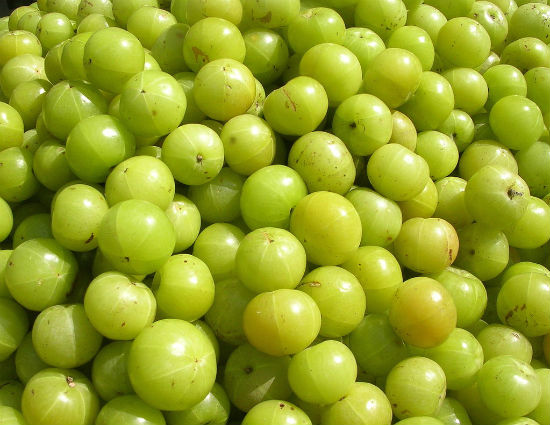
Chemistry: Amla is highly nutritious and is an important dietary source of vitamin C, mineral and amino acids. The edible fruit tissue contains protein concentration threefold and ascorbic acid concentration 160-fold compared to that of the apple. The fruit also contains a considerably higher concentration of most minerals and amino acids than apples.
Glutamic acid, proline, aspartic acid, alanine, and lysine are 29.6 per cent, 14.6 per cent, 8.1 per cent, 5.4 per cent and 5.3 per cent respectively of the total amino acids. the pulpy portion of the fruit, dried and freed from water contains: gallic acid 1.32 per cent, tannin, sugar 36.10 Per cent, the gum 13.75 per cent, albumin 13.08 per cent, crude cellulose 17.08 per cent, mineral matter 4.12 per cent and moisture 3.83 percent. Amla fruit ash contains 2.5 ppm chromium, 4 ppm zinc and 3 ppm copper.
Medical and nutritive properties: Amla is a collective remedy for many ailments. It is the richest natural source of vitamin C, containing as much as 20 times that of an orange. What makes this even more extraordinary is that unlike many other natural sources, the vitamin C content does not diminish with cooking. The fresh fruit contains more than 80 per cent of water besides protein, carbohydrates, fibre, minerals and vitamins. Amla regulates the level of cholesterol in our body. The amount of unused cholesterol gets collected in the blood vessels. Vitamin C in amla helps in dilating the blood vessels there by reducing the blood pressure.
It has got anti-viral and antimicrobial properties. There is preliminary evidence in vitro that its extracts induce apoptosis and modify gene expression in arthritis and osteoporosis. It also promotes the spontaneous repair and regeneration process of the pancreas occurring after an acute attack. Amla keeps us away from numerous diseases; though every part of the tree possesses therapeutic potentials, it is the fruit which constitutes the main drug.
Experimental preparations of leaves bark or fruit have shown potential efficacy against laboratory models of diseases such as for inflammation, renal disorders and diabetes. Long lists of the amlaʼs medicinal use prescribed by the ayurvedic physicians include heart support, fertility enhancement, increasing memory, balancing stomach acidity, vertigo, worms, aiding the urinary system, brain nourishment and healthier skin.
It removes excessive salivation, nausea, vomiting, giddiness, spermatorrhoea, internal body heat and menstrual disorders.
It also promotes the absorption of calcium, thus creating healthier bones, teeth, nails and hair. The dried amla fruit is an astringent and useful in cases of diarrhoea and dysentery. In ayurvedic polyherbal formulations, amla is a very common constituent. It is one of the three myrobalans forming the herbal rasayana triphala, literally three fruits, others being bibhitaki and haritaki. It is most notably the primary ingredient in another ancient herbal rasayana called chyawanprash, a formula which contains 43 herbal ingredients as well as clarified butter, sesame oil, sugar cane juice and honey. This was first mentioned in the Charaka Samhita as a premier rasayana or rejuvenative compound.
Chewing a few fresh amlas with two tbsp of honey along with a lemon squeezed in a glass of plain water first thing in the morning brings up freshness and boosts energy throughtout the day. In Chinese traditional therapy, this fruit is called yuganzi which is used to cure throat inflammation.
Culinary uses: Amla is eaten raw as a fruit and cooked in various dishes. In South India, the fruit is pickled with salt, oil and spices. In Andhra Pradesh, tender varieties of amla are used to prepare dal. Dried amlas are sometimes ground into a powder and are also available stoned and chopped state so that they are easy to reconstitute. The dried pieces or powder can be stored in an airtight container for up to a year. It is common to eat amla steeped in salt water and turmeric to make the sour fruits palatable.
Culture: In Hinduism, amla is considered very sacred. The deity of wealth, Lakshmi, who is especially associated with this tree, is worshipped with its leaves, particularly in the month of November/December.

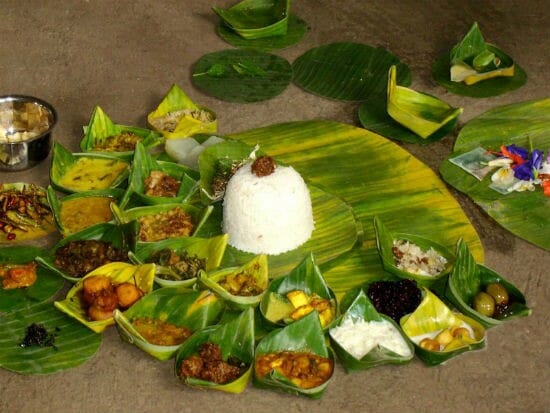

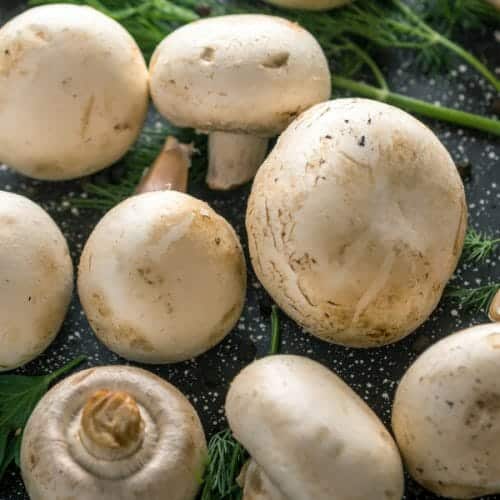
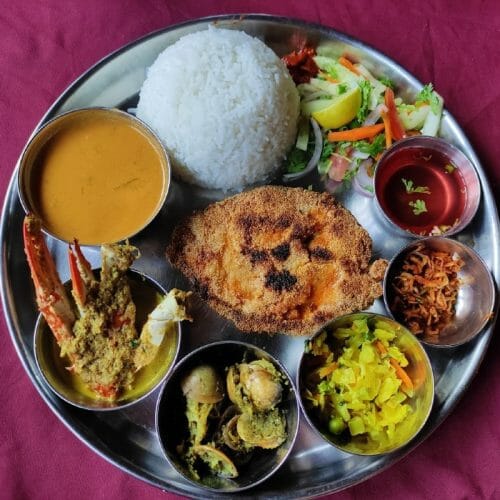
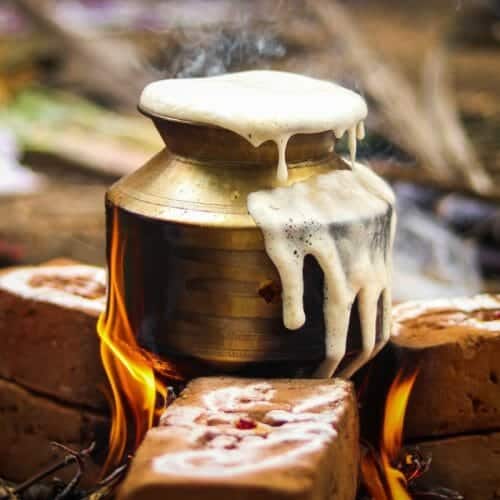

1 comment
Nice Informative post!!